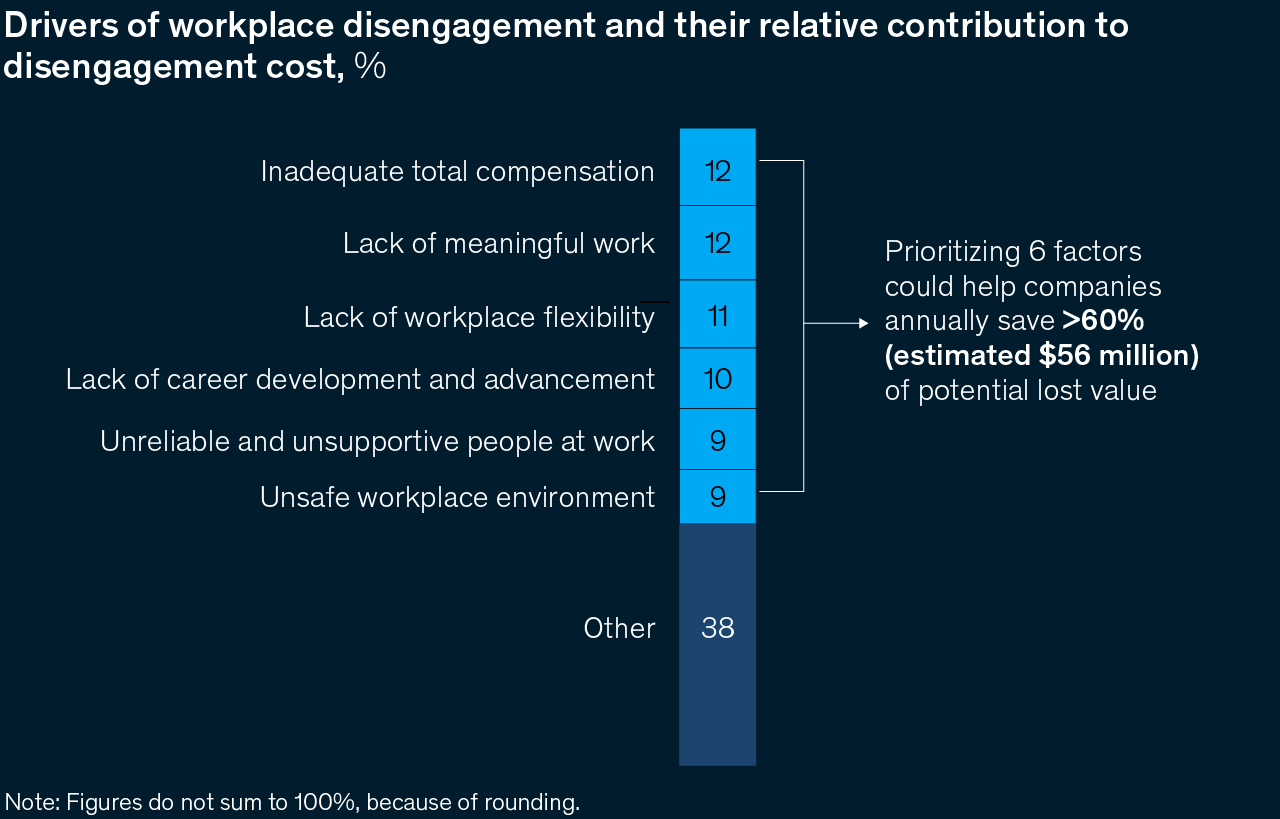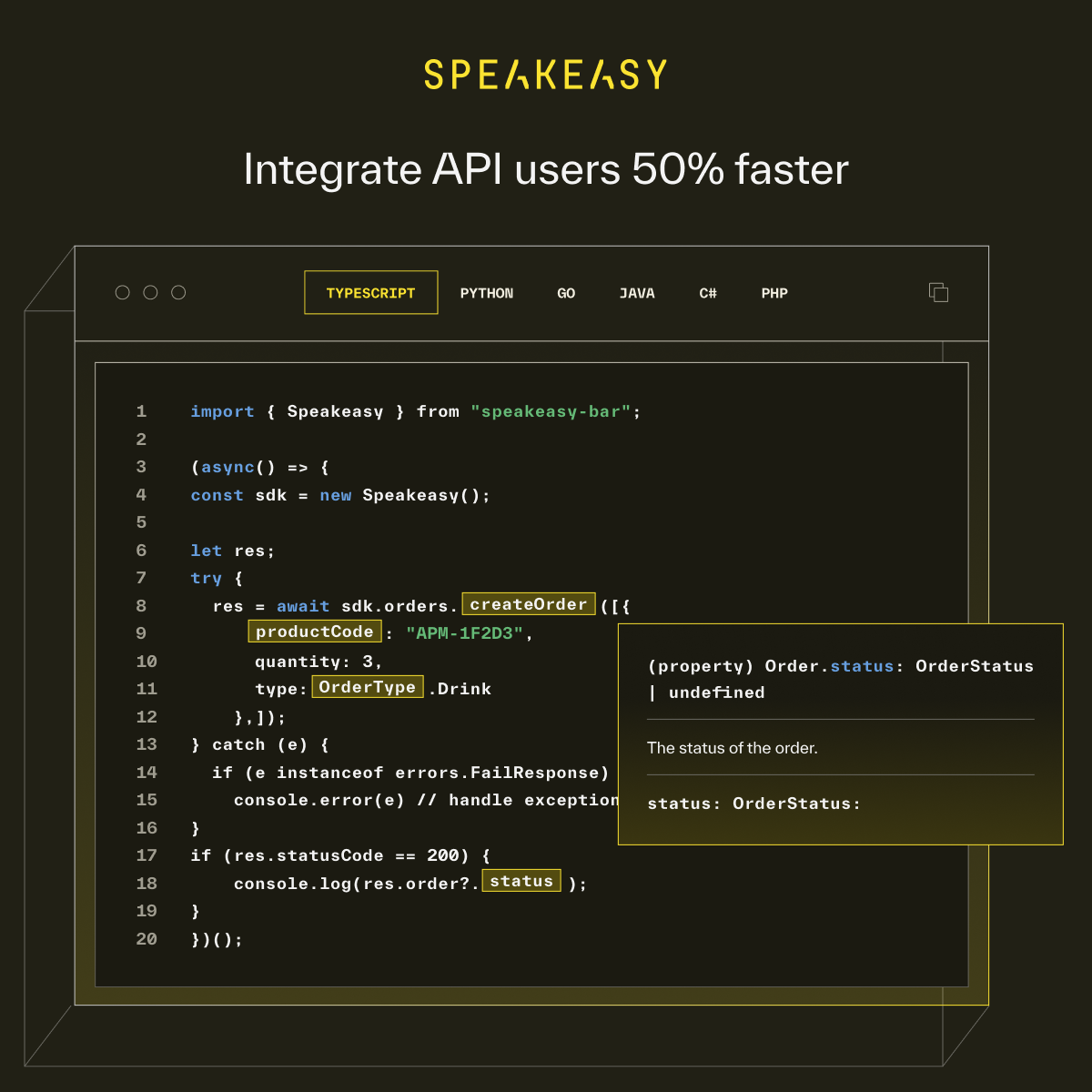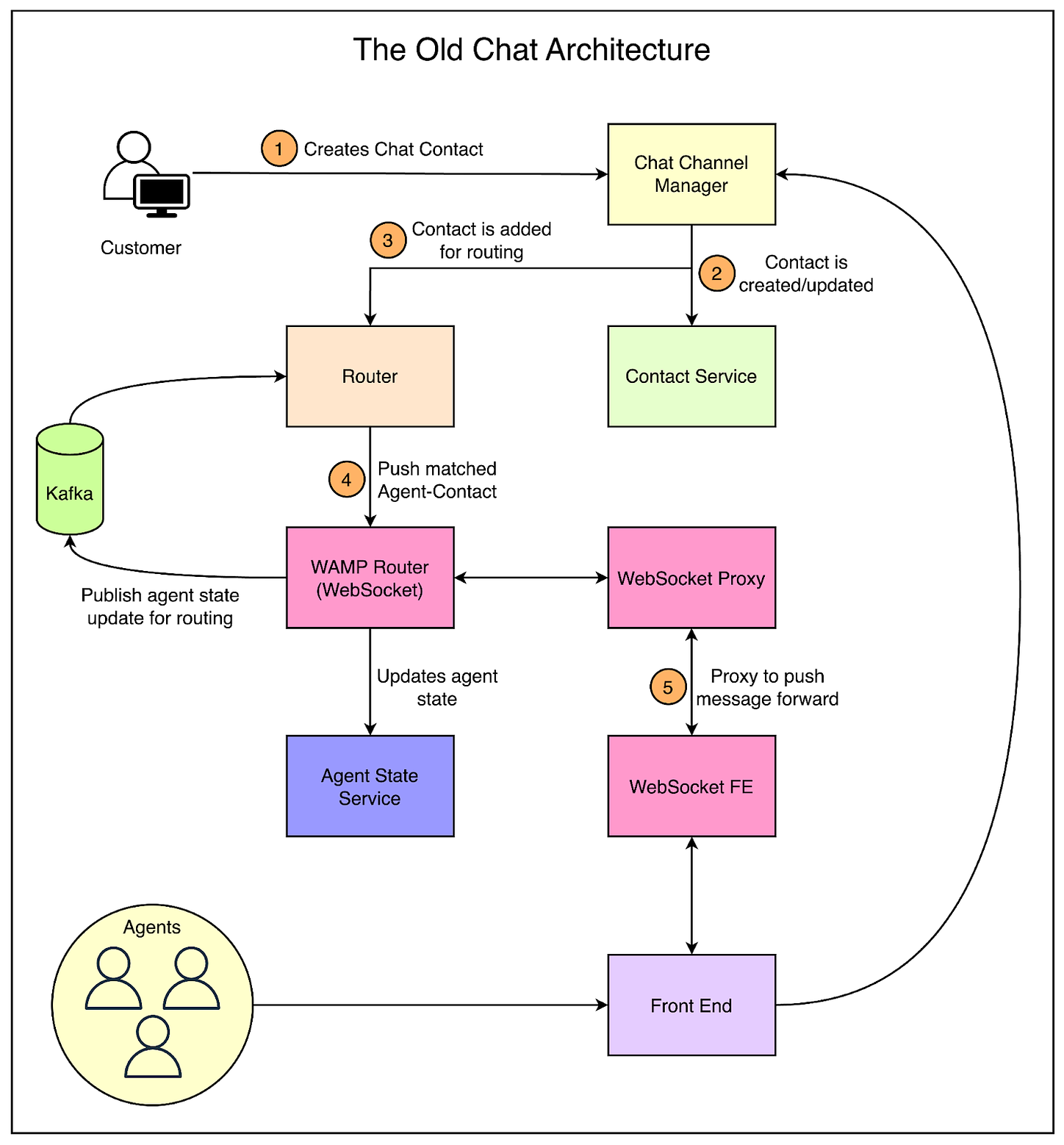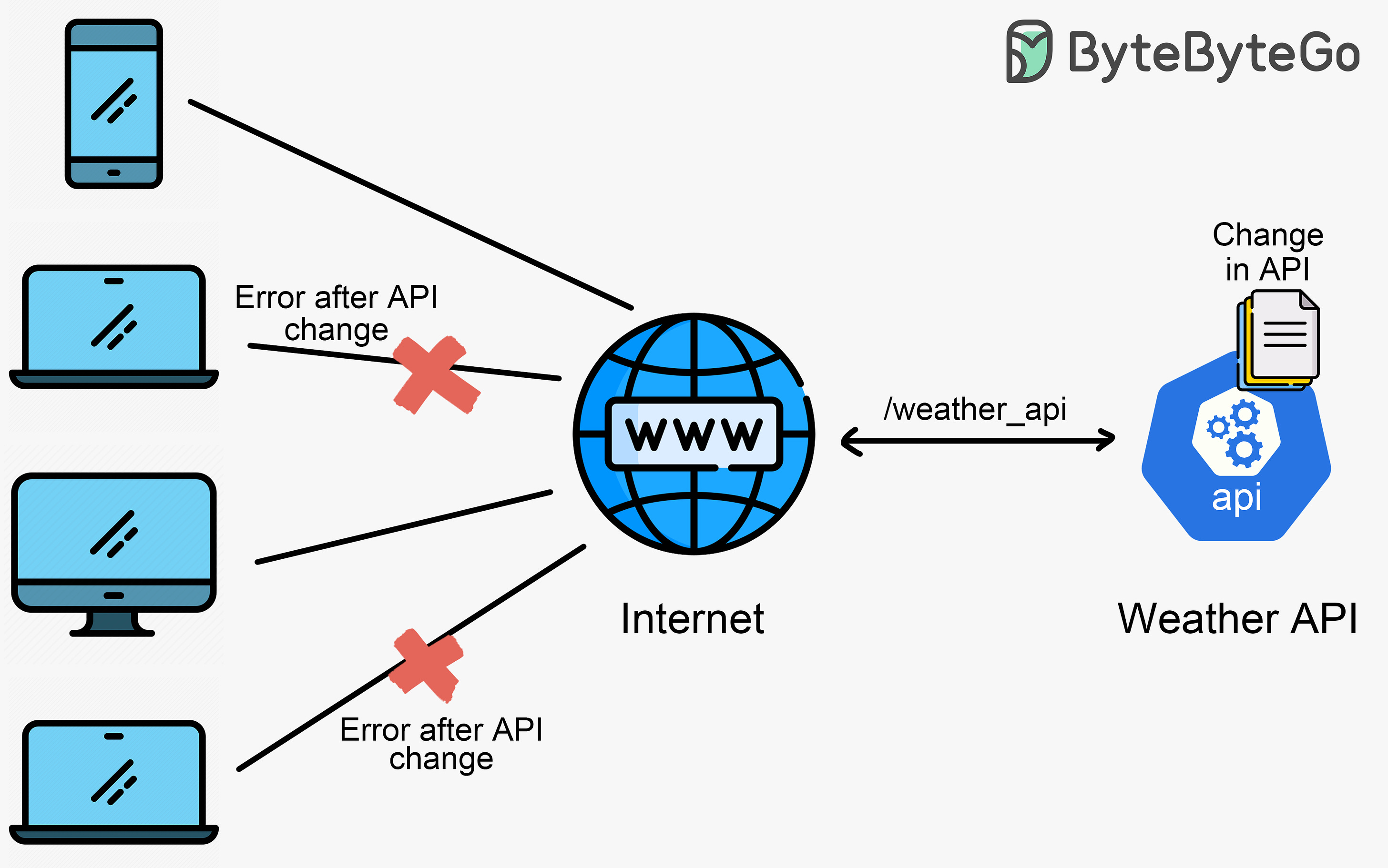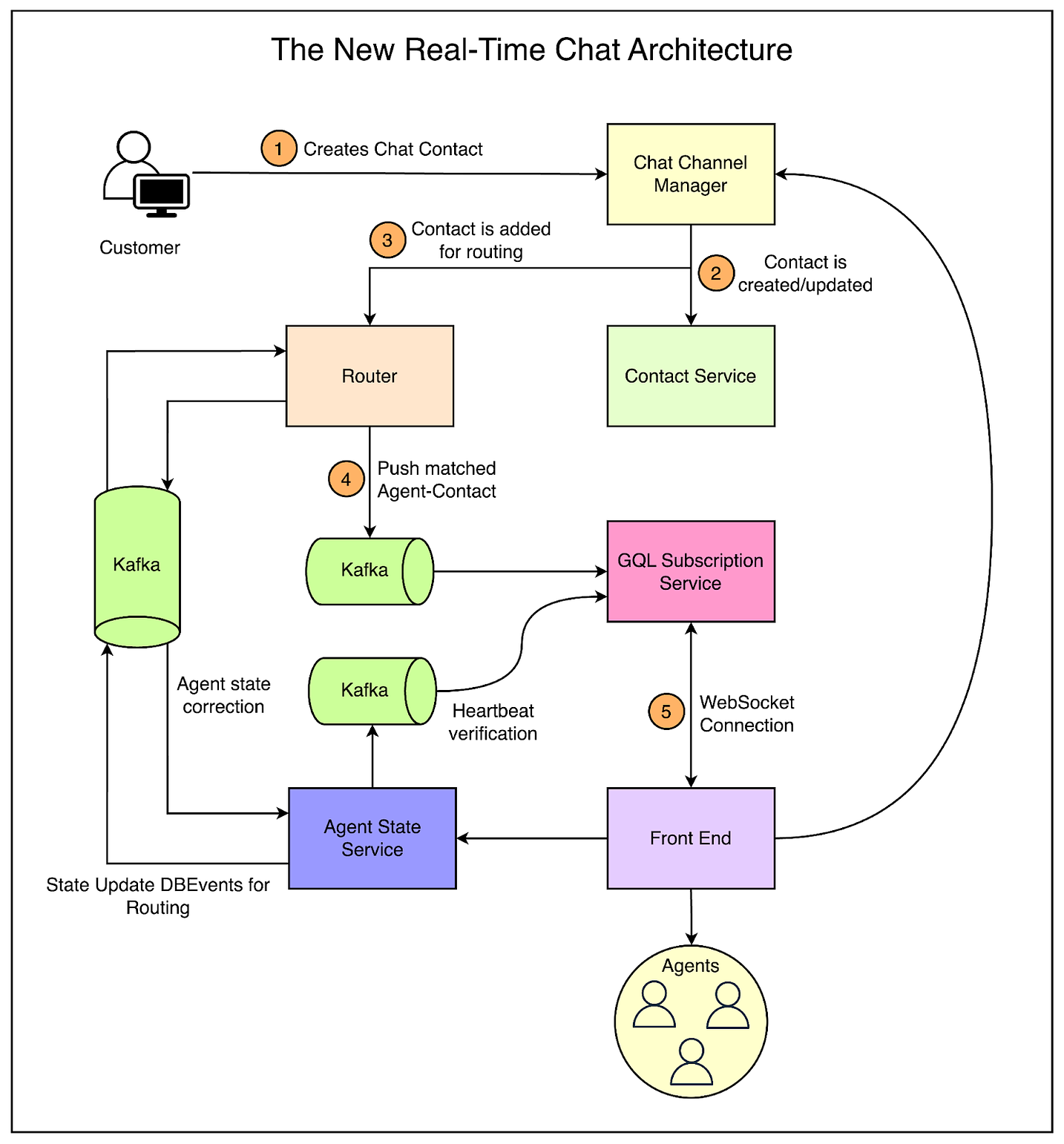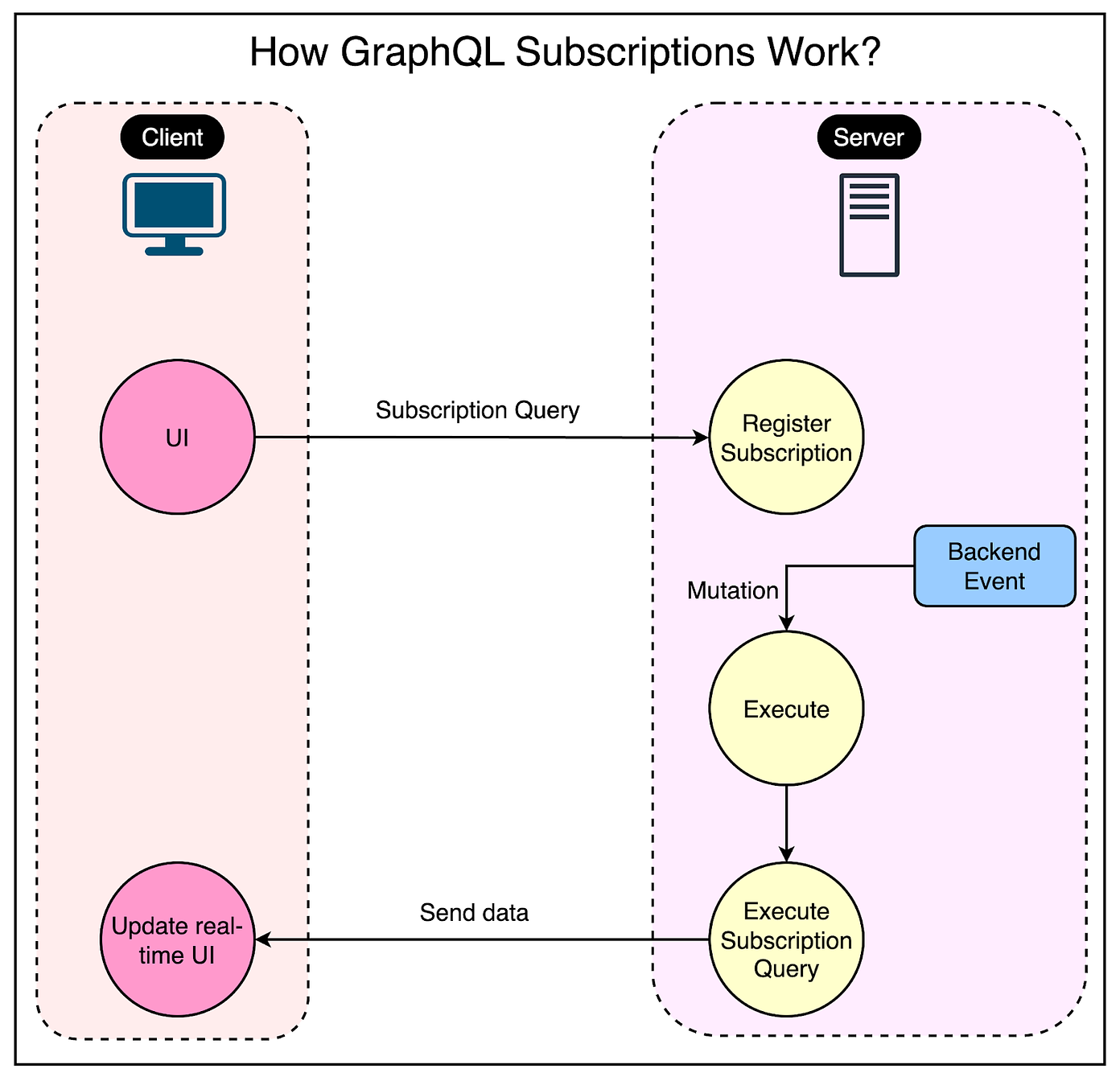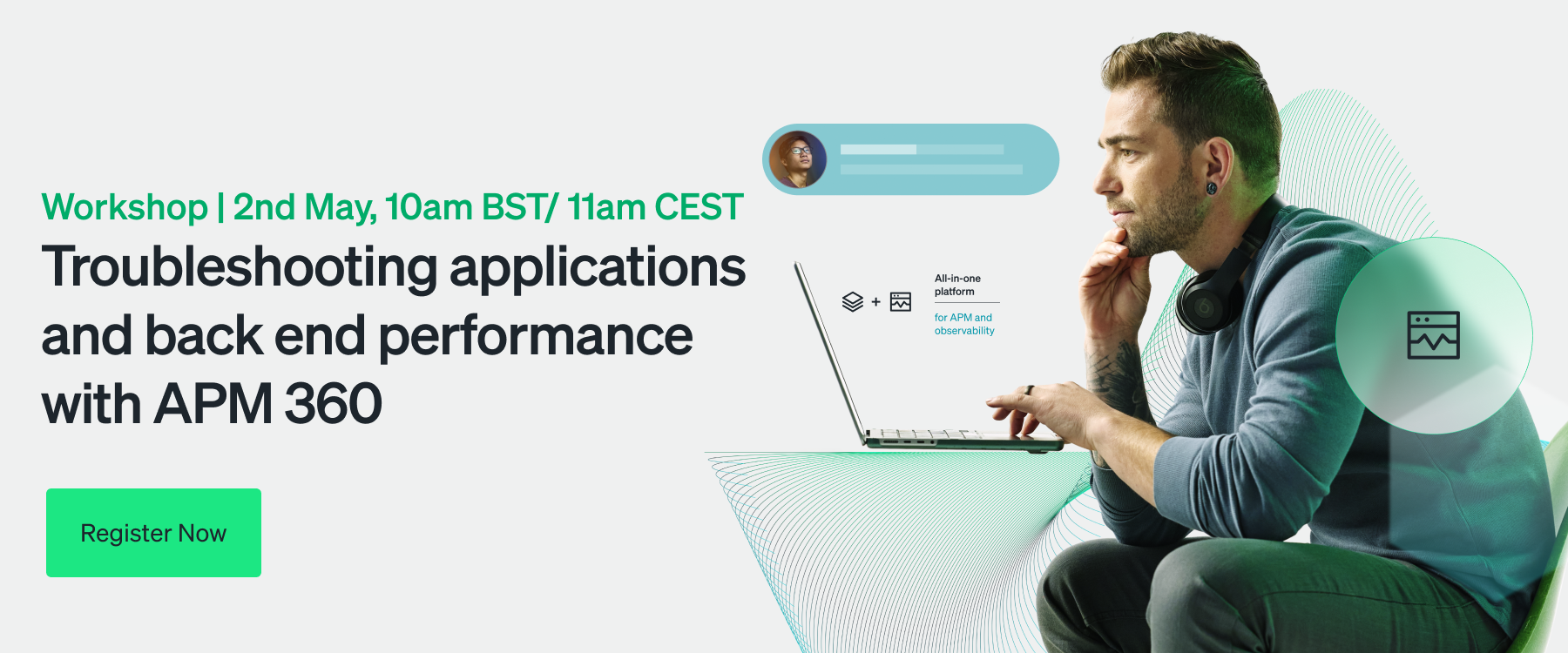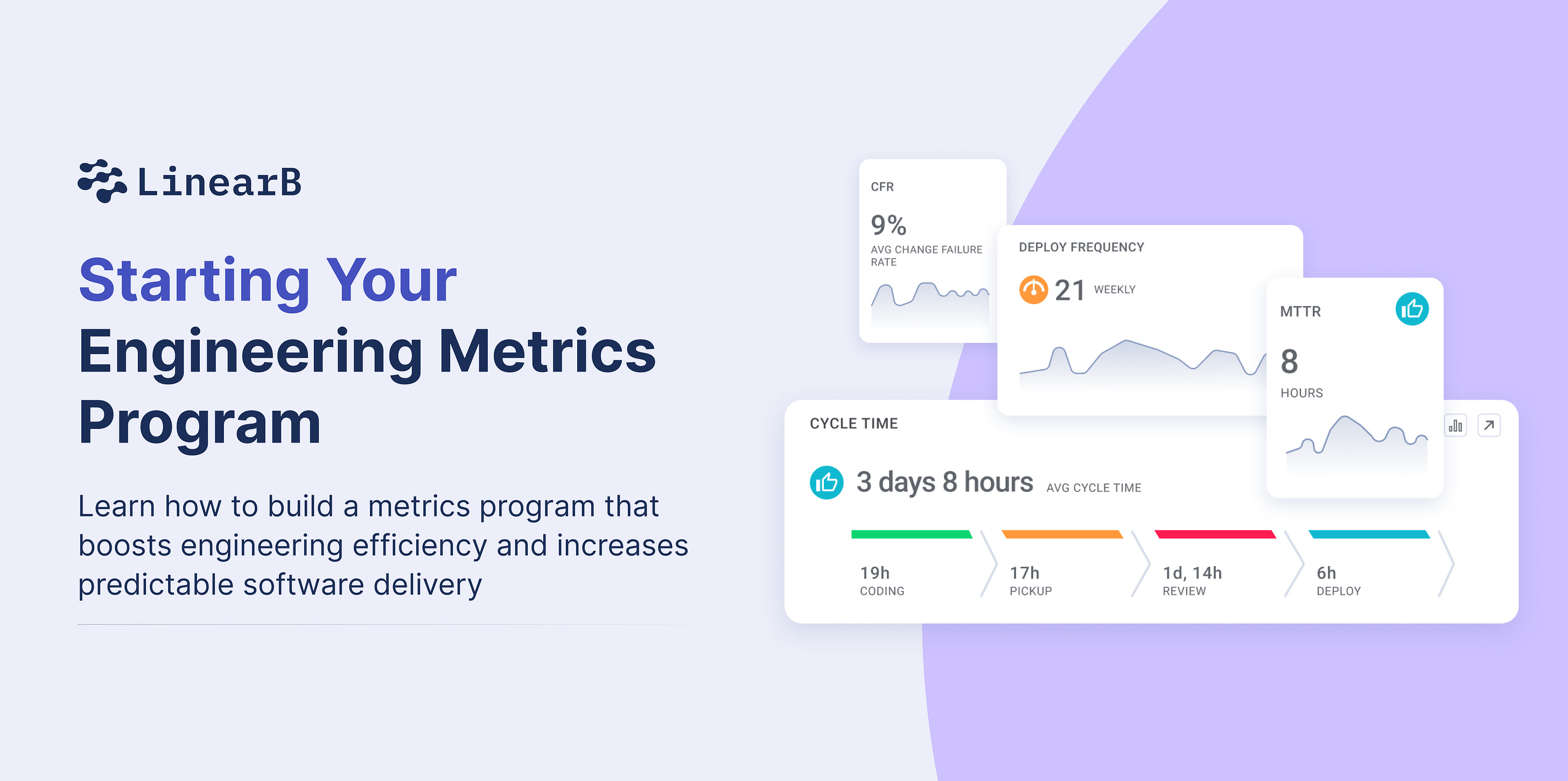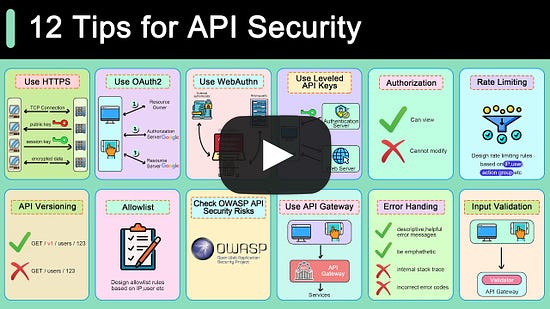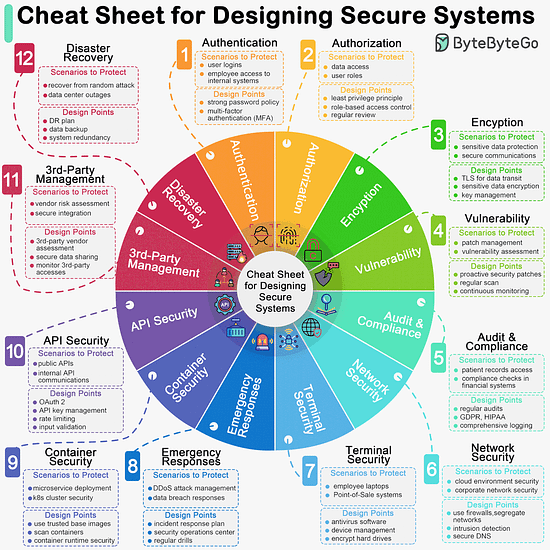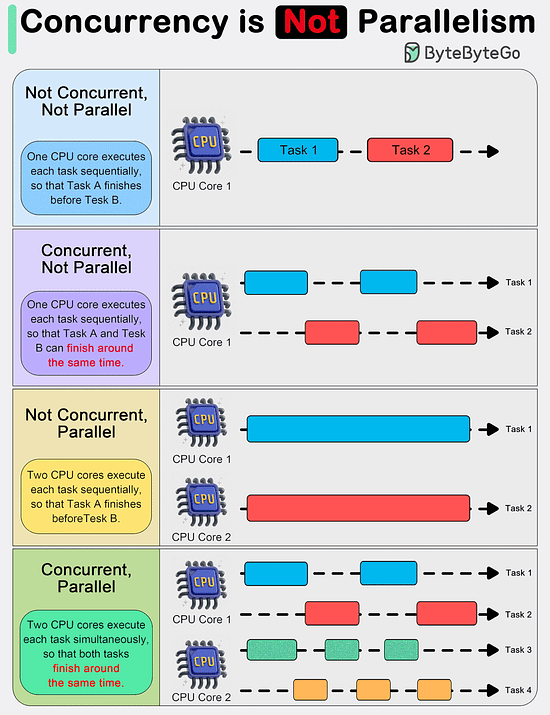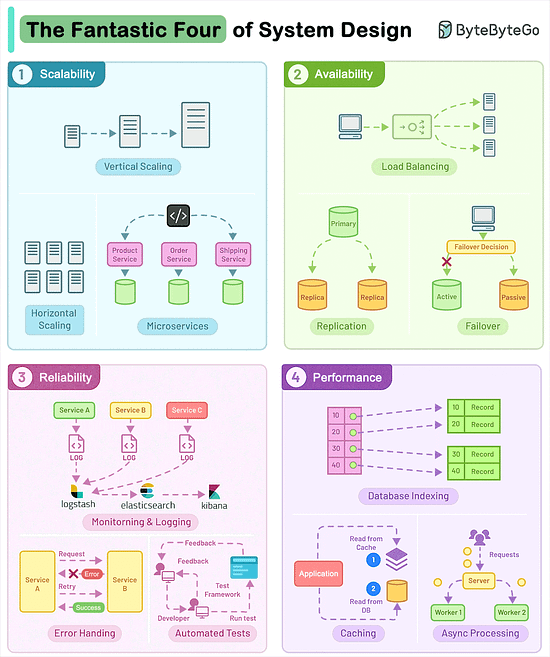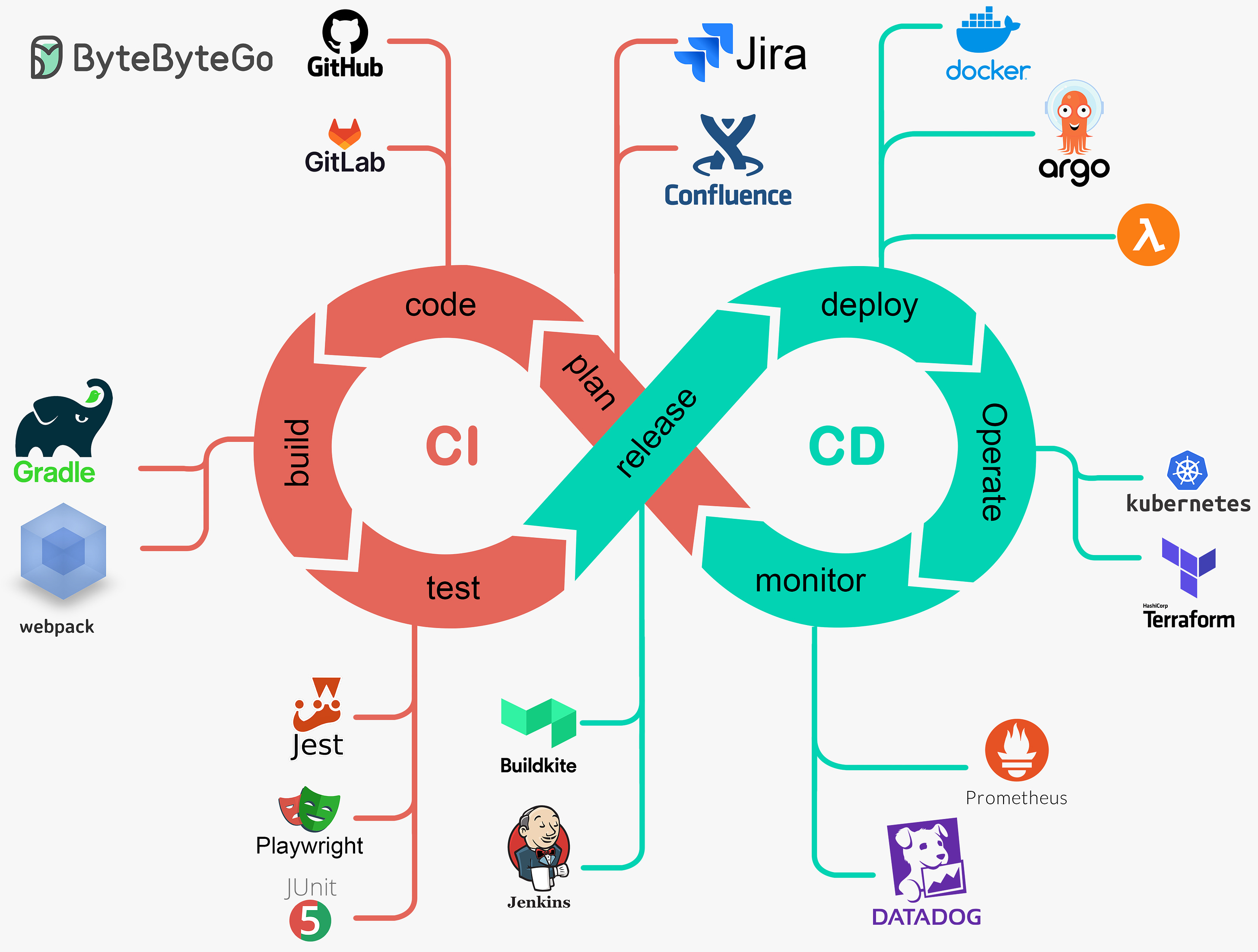Archives
- By thread 5360
-
By date
- June 2021 10
- July 2021 6
- August 2021 20
- September 2021 21
- October 2021 48
- November 2021 40
- December 2021 23
- January 2022 46
- February 2022 80
- March 2022 109
- April 2022 100
- May 2022 97
- June 2022 105
- July 2022 82
- August 2022 95
- September 2022 103
- October 2022 117
- November 2022 115
- December 2022 102
- January 2023 88
- February 2023 90
- March 2023 116
- April 2023 97
- May 2023 159
- June 2023 145
- July 2023 120
- August 2023 90
- September 2023 102
- October 2023 106
- November 2023 100
- December 2023 74
- January 2024 75
- February 2024 75
- March 2024 78
- April 2024 74
- May 2024 108
- June 2024 98
- July 2024 116
- August 2024 134
- September 2024 130
- October 2024 141
- November 2024 171
- December 2024 115
- January 2025 216
- February 2025 140
- March 2025 220
- April 2025 233
- May 2025 239
- June 2025 303
- July 2025 173
-
Your employees are disengaged. Here’s how to turn it around.
Intersection
Get your briefing Employee disengagement is costing companies—to the tune of $90 million in lost productivity annually. Prioritizing six factors can help recapture some of that potential lost value, say McKinsey senior partner Aaron De Smet and coauthors. To learn more about how to keep your employees engaged, check out the latest edition of the Five Fifty.
Share these insights
Did you enjoy this newsletter? Forward it to colleagues and friends so they can subscribe too. Was this issue forwarded to you? Sign up for it and sample our 40+ other free email subscriptions here.
This email contains information about McKinsey’s research, insights, services, or events. By opening our emails or clicking on links, you agree to our use of cookies and web tracking technology. For more information on how we use and protect your information, please review our privacy policy.
You received this email because you subscribed to our McKinsey Quarterly Five Fifty alert list.
Copyright © 2024 | McKinsey & Company, 3 World Trade Center, 175 Greenwich Street, New York, NY 10007
by "McKinsey Quarterly Five Fifty" <publishing@email.mckinsey.com> - 04:40 - 23 Apr 2024 -
How Uber Built Real-Time Chat to Handle 3 Million Tickets Per Week?
How Uber Built Real-Time Chat to Handle 3 Million Tickets Per Week?
Integrate API users 50% faster (Sponsored) Creating a frictionless API experience for your partners and customers no longer requires an army of engineers. Speakeasy’s platform makes crafting type-safe, idiomatic SDKs for enterprise APIs easy. That means you can unlock API revenue while keeping your team focused on what matters most: shipping new products. Make SDK generation part of your API’s CI/CD and distribute libraries that users love at a fraction of the cost of maintaining them in-house.͏ ͏ ͏ ͏ ͏ ͏ ͏ ͏ ͏ ͏ ͏ ͏ ͏ ͏ ͏ ͏ ͏ ͏ ͏ ͏ ͏ ͏ ͏ ͏ ͏ ͏ ͏ ͏ ͏ ͏ ͏ ͏ ͏ ͏ ͏ ͏ ͏ ͏ ͏ ͏ ͏ ͏ ͏ ͏ ͏ ͏ ͏ ͏ ͏ ͏ ͏ ͏ ͏ ͏ ͏ ͏ ͏ ͏ ͏ ͏ ͏ ͏ ͏ ͏ ͏ ͏ ͏ ͏ ͏ ͏ ͏ ͏ ͏ ͏ ͏ ͏ ͏ ͏ ͏ ͏ ͏ ͏ ͏ ͏ ͏ ͏ ͏ ͏ ͏ ͏ ͏ ͏ ͏ ͏ ͏ ͏ ͏ ͏ ͏ ͏ ͏ ͏ ͏ ͏ ͏ ͏ ͏ ͏ ͏ ͏ ͏ ͏ ͏ ͏ ͏ ͏ ͏ ͏ ͏ ͏ ͏ ͏ ͏ ͏ ͏ ͏ ͏ ͏ ͏ ͏ ͏ ͏ ͏ ͏ ͏ ͏ ͏ ͏ ͏ ͏ ͏ ͏ ͏ ͏ ͏ ͏ ͏ ͏ ͏ ͏ ͏ ͏ ͏ ͏ ͏ ͏ ͏ ͏ ͏ ͏ ͏ ͏ ͏ ͏ ͏ ͏ ͏ ͏ ͏ ͏ ͏ ͏ ͏ ͏ ͏ ͏ ͏ ͏ ͏ ͏ ͏ ͏ ͏ ͏ ͏ ͏ ͏ ͏ ͏ ͏ ͏ ͏ ͏ ͏ ͏ ͏ ͏ ͏ ͏ ͏ Forwarded this email? Subscribe here for moreIntegrate API users 50% faster (Sponsored)
Creating a frictionless API experience for your partners and customers no longer requires an army of engineers. Speakeasy’s platform makes crafting type-safe, idiomatic SDKs for enterprise APIs easy. That means you can unlock API revenue while keeping your team focused on what matters most: shipping new products. Make SDK generation part of your API’s CI/CD and distribute libraries that users love at a fraction of the cost of maintaining them in-house.
Uber has a diverse customer base consisting of riders, drivers, eaters, couriers, and merchants.
Each user persona has different support requirements when reaching out to Uber’s customer agents through various live and non-live channels. Live channels are chat and phone while non-live is Uber’s inApp messaging channel.
For the users, the timely resolution of issues takes center stage. However, Uber’s main concern revolves around customer satisfaction and the cost of resolution of tickets. To keep costs in control, Uber needs to maintain a low CPC (cost-per-contact) with a good customer satisfaction rating.
Based on their analysis, they found that the live chat channel offers the most value when compared to other channels. It allows for:
Higher automation rate
Higher staffing efficiency since agents can handle multiple chats at the same time
High FCR (first contact resolution)
However, from 2019 to 2024, only 1% of all support interactions (also known as contacts) were served via the live chat channel because the chat infrastructure at Uber wasn’t capable of meeting the demand.
In this post, we look at how Uber built their real-time chat channel to work at the required scale.
The Legacy Chat Architecture
The legacy architecture for live chat at Uber was built using the WAMP protocol. WAMP or Web Application Messaging Protocol is a WebSocket subprotocol that is used to exchange messages between application components.
It was primarily used for message passing and PubSub over WebSockets to relay contact information to the agent’s machine.
The below diagram shows a high-level flow of the chat contact from being created to being routed to an agent on the front end.
This architecture had some core issues as follows:
1 - Reliability
Once the traffic scaled to 1.5X, the system started to face reliability issues.
Almost 46% of the events from the backend were not getting delivered to the Agent’s browser, adding to the customer’s wait time to speak to an agent. It also created delays for the agent resulting in wastage of bandwidth.
2 - Scale
Once the request per second crossed 10, the system’s performance deteriorated due to high memory usage and file descriptor leaks.
Also, it wasn’t possible to horizontally scale the system due to limitations with older versions of the WAMP library.
3 - Observability and Debugging
There were major issues related to observability and debugging:
It wasn’t possible to track the health of the chat contacts. This made it difficult to understand whether chat contacts were missing SLAs due to engineering or staffing issues.
Almost 8% of the chat volume wasn’t getting routed to any customer agent.
The WAMP protocol and its libraries were deprecated and didn’t provide sufficient insights into their inner workings. This made debugging for issues difficult.
4 - Stateful
The services in the architecture were stateful resulting in maintenance and restart complications.
This caused frequent spikes in message delivery time and losses.
Latest articles
If you’re not a paid subscriber, here’s what you missed.
To receive all the full articles and support ByteByteGo, consider subscribing:
Goals of the New Chat Architecture
Due to these challenges, Uber decided to build a new real-time chat infrastructure with the following goals:
Scale up the chat traffic from 1% to 80% of the overall contact volume by the end of 2023. This came to around 3 million tickets per week.
The process of connecting a customer to an agent after identification should have a greater than 99.5% success rate on the first trial.
Build end-to-end observability and debuggability over the entire chat flow.
Build stateless services that can be scaled horizontally.
The New Live Chat Architecture
It was important for the new architecture to be simple to improve transparency and scalability.
The team at Uber decided to go with the Push Pipeline. It was a simple WebSocket server that agent machines would connect to and be able to send and receive messages through one generic socket channel.
The below diagram shows the new architecture.
Below are the details of the various components:
Front End UI
This is used by the agents to interact with the customers.
Widgets and different actions are made available to the agents to take appropriate actions for the customer.
Contact Reservation
The router is the service that finds the most appropriate match between the agent and contact depending on the contact details.
An agent is selected based on the concurrency set of the agent’s profile such as the number of chats an agent can handle simultaneously. Other considerations include:
SLA-based routing: Chat contacts are prioritized based on SLA.
Sticky routing: Reopened contacts are sent to the same agents that handled the ticket earlier.
Priority routing: Prioritizing based on different rules
On finding the match, the contact is pushed into a reserved state for the agent.
Push Pipeline
When the contact is reserved for an agent, the information is published to Kafka and is received by the GQL Subscription Service.
On receiving the information through the socket via GraphQL subscriptions, the Front End loads the contact for the agent along with all the necessary widgets and actions.
Agent State
When the agent starts working, he/she goes online via a toggle on the Front End.
This updates the Agent State service, allowing the agent to be mapped to a contact.
GQL Subscription Service
The front-end team was already using GraphQL for HTTP calls to the services. Due to this familiarity, the team selected GraphQL subscriptions for pushing data from the server to the client.
The below diagram shows how GraphQL subscriptions work on a high level.
In GraphQL subscriptions, the client sends messages to the server via subscription requests. The server matches the queries and sends back messages to the client machines. In this case, the client machines are the agent machines.
Uber’s engineering team used GraphQL over WebSockets by leveraging the graphql-ws library. The library had almost 2.3 million weekly downloads and was also recommended by Apollo.
To improve the availability, they used a few techniques:
Enabled bidirectional ping pong messages to prevent hung sockets and disconnect them automatically in case of an unreliable connection.
Backed-off reconnects are automatically attempted after any disconnects. On successful reconnection, all the reserved or assigned contacts are fetched so the agent can receive them.
For a reserved contact, if the front end doesn’t send an acknowledgment to the chat service, they reserve the same contact for another available agent. The health of the WebSocket and http protocols are checked by sending a heartbeat over the GraphQL subscriptions.
Test Results from the New Chat Architecture
Uber performed functional and non-functional tests to ensure that both customers and agents received the best experience.
Some results from the tests were as follows:
Each machine was able to establish a 10K socket connection. They were able to horizontally scale and test for 20 times the number of events supported by the previous architecture.
Shadow traffic flows were tested with a capacity of 40K contacts and 2000 agents daily. The process didn’t reveal any problems and the latency and availability were satisfactory.
Existing traffic was directed through the new system with the old user interface for agents to serve as a reliability test. They were able to successfully manage the traffic while maintaining latency within the defined SLAs.
The earlier system had bugs where agents who finished work for the day remained online in the system if they closed their tabs. This resulted in increased customer wait times since the pipeline tried to push events to these offline agents. With the new system, they started to automatically log out agents based on recent acknowledgment misses.
The chat channel has been scaled to around 36% of the overall Uber Contact volume that is routed to agents. Over the next few months, the plan is to increase the share further.
The error rate of delivering the contact has gone down from 46% to just 0.45% in the new architecture.
The new architecture has fewer services, protocols, and better observability thereby improving the overall simplicity of the setup.
References:
SPONSOR US
Get your product in front of more than 500,000 tech professionals.
Our newsletter puts your products and services directly in front of an audience that matters - hundreds of thousands of engineering leaders and senior engineers - who have influence over significant tech decisions and big purchases.
Space Fills Up Fast - Reserve Today
Ad spots typically sell out about 4 weeks in advance. To ensure your ad reaches this influential audience, reserve your space now by emailing hi@bytebytego.com.
Like
Comment
Restack
© 2024 ByteByteGo
548 Market Street PMB 72296, San Francisco, CA 94104
Unsubscribe
by "ByteByteGo" <bytebytego@substack.com> - 11:36 - 23 Apr 2024 -
Re: Audit Report Overview !
Please let me know, if you are interested in our services or not. A prompt reply will be highly appreciated.
Please provide some response even if you are not interested.
Thanks
From: Rose Williams
Sent: Monday, April 08, 2024 9:07 AM
To: info@learn.odoo.com
Subject: WEB Accessibility report !
I have found your website via Google.
I was going through your website www.learn.odoo.com & I personally see a lot of potential in your website & business.
With your permission, I would like to send you an Audit report of your website with Prices showing you a few things to greatly improve these search results for you.
These things are not difficult, and my report will be very specific. It will show you exactly what needs to be done to move you up in the rankings dramatically.
We can place your website on Google's 1st page.
May I send you a “Quote & Report?” If you are interested.
Thanks & Regards,
Rose Williams
Marketing Manager
by "Rose Williams" <rosewilliams091@outlook.com> - 08:51 - 23 Apr 2024 -
The wait is over.. Announcing the 2024 Remote Influencer Report 🎉
The wait is over.. Announcing the 2024 Remote Influencer Report 🎉
See the top 150 remote experts who made the list!Hi MD,
🎉 We are excited to announce that the 2024 Remote Influencer Report is now available! 🎉
We searched the globe to find the top 150 experts on the future of work so you know who to follow for tips, advice, and credible insights. We have organized the report by three types of influencers:
- Remote Innovators are those who paved the way for remote work.
- Remote Enablers are those who make remote work possible today.
- Remote Accelerators are the ones who influence what our working world will look like in the future.
Check out the report to see who made the list, hear their expert advice, and get links to the remote resources that they provide!
Thank you,

Hallie Wiseman
Manager, Global CampaignsNominate an Expert for the
2025 Remote Influencer ReportIdentifying the top influencers in remote work each year is no easy task, and we know there are others who are making waves. If you know someone who you think should be on the next Remote Influencer Report, you can nominate them below.




You received this email because you are subscribed to News & Offers from Remote Europe Holding B.V
Update your email preferences to choose the types of emails you receive.
Unsubscribe from all future emailsRemote Europe Holding B.V
Copyright © 2024 All rights reserved.
Kraijenhoffstraat 137A 1018RG Amsterdam The Netherlands
by "Remote" <hello@remote-comms.com> - 08:02 - 23 Apr 2024 -
[Online workshop] Troubleshooting Applications and back end performance with APM 360
New Relic
 Register for this free online workshop on the 2nd May at 10 AM BST/ 11 AM CEST for a comprehensive introduction to New Relic APM 360, the cutting-edge solution for modern distributed applications.
Register for this free online workshop on the 2nd May at 10 AM BST/ 11 AM CEST for a comprehensive introduction to New Relic APM 360, the cutting-edge solution for modern distributed applications.
APM 360 allows you to get a unified view of critical telemetry data across your stack and development lifecycle. Prevent issues before they escalate and troubleshoot faster with integrated infrastructure monitoring, error user impact analysis, and distributed tracing. APM 360 helps eliminate blind spots with guided workflows, ensuring comprehensive observability.
In this online workshop, you’ll learn how to:
- Use new UI components to troubleshoot, assess user impact, and uncover coverage gaps
- Work with the updated infrastructure table to assess underlying backend issues
- Utilise the new distributed tracing component to quickly assess impacted services
- Explore the error user impact chart
- Determine root cause with errors inbox and error stack traces data
Register now Need help? Let's get in touch.



This email is sent from an account used for sending messages only. Please do not reply to this email to contact us—we will not get your response.
This email was sent to info@learn.odoo.com Update your email preferences.
For information about our privacy practices, see our Privacy Policy.
Need to contact New Relic? You can chat or call us at +44 20 3859 9190.
Strand Bridge House, 138-142 Strand, London WC2R 1HH
© 2024 New Relic, Inc. All rights reserved. New Relic logo are trademarks of New Relic, Inc

by "New Relic" <emeamarketing@newrelic.com> - 06:06 - 23 Apr 2024 -
How could open-source software help auto leaders?
On Point
Advice for AV makers
by "Only McKinsey" <publishing@email.mckinsey.com> - 01:21 - 23 Apr 2024 -
Employment Verification - 371154895
Hi,
We are from accurate background we are third party background screening company we would like to verify details submitted by a person listing your company as an employer . Please provide contact information for your Human Resources department or the designated contact handling verifications of employment. Thank you for your time.
Thanks & Regards
Pooja Singh
Verification Specialist
+91-540-277-3478 Ext: 60491| www.accurate.com
This email and any attachments thereto may contain private, confidential, and privileged material for the sole use of the intended recipient named in the original email to which this message was attached. Any review, copying, or distribution of this email (or any attachments thereto) by others is strictly prohibited. If you are not the intended recipient, please return this email to the sender immediately and permanently delete the original and any copies of this email and any attachments thereto.
by "Pooja Singh" <posingh@accurate.com> - 01:20 - 22 Apr 2024 -
Reminder: Explore AI Defense Strategies with Sumo Logic
Sumo Logic
Join us at Booth S20 to discuss Cloud Infrastructure Security and Cloud SIEM.
 Dear Mohammad,
Dear Mohammad,
Do you want to power DevSecOps in this modern age?
Then join us to the AWS Summit London to learn more about how you can align these components in a modern and most efficient way, with Sumo Logic!
On top of that you can find out more about the implications of AI in a modern defense strategy and explore how to defend your business against modern AI-enabled adversaries.
Build an AI strategy to help your Security Operations teams adapt to new threats in this new and ever-changing cyber landscape.
We're eager to meet you at booth B36 for an in-depth conversation or a demo.
Best regards,
Sumo Logic
About Sumo Logic
Sumo Logic is the pioneer in continuous intelligence, a new category of software to address the data challenges presented by digital transformation, modern applications, and cloud computing.Sumo Logic, Aviation House, 125 Kingsway, London WC2B 6NH, UK
© 2024 Sumo Logic, All rights reserved.Unsubscribe 


by "Sumo Logic" <marketing-info@sumologic.com> - 06:01 - 22 Apr 2024 -
Here’s to your (organization’s) health: A leader’s guide
Health is wealth Brought to you by Liz Hilton Segel, chief client officer and managing partner, global industry practices, & Homayoun Hatami, managing partner, global client capabilities
After more than two decades of research on organizational health—based on a company’s culture, behavior, and management practices—we know that the link between how well leaders run the organization and its ultimate performance is undeniable. Healthier organizations see a range of benefits that their not-so-healthy counterparts do not: among them, these companies are more resilient, do a better job retaining talent, and realize higher earnings growth in both the short and the long term. As the fundamental relationship between health and performance endures, the features that make an organization healthy continue to evolve over time. This week, we look at the aspects of organizational health that, according to recent McKinsey research, matter now more than ever.
So much in the business and economic environment has changed and challenged leaders in recent years. Yet the latest results from McKinsey’s Organizational Health Index (OHI) confirm that company culture remains a prerequisite for sustained success and superior performance. At the same time, the findings point to three insights about organizational health that speak to the current moment. According to senior partners Arne Gast and Brooke Weddle and their coauthors, decisive (as opposed to “authoritative”) leadership—which requires quick decision making and a commitment to act—is now a top predictor of health, especially when leaders empower employees on the front line. So are the pursuit of data-driven innovation (whether it’s of the bottom-up or top-down variety) and a dynamic approach to allocating talent that can both improve employee attraction and attention and enable companies to respond quickly to new trends.
That’s the number of foundational “power practices” that have an outsize effect on an organization’s performance: strategic clarity, role clarity, personal ownership, and competitive insights. McKinsey’s Bryan Hancock and Brooke Weddle say a company’s organizational health journey should start with these four practices, which are must-haves for good health and performance. Companies should also stay on top of the newer elements of the OHI that reflect the shifts and challenges that today’s organizations face. Among these elements are employee experience (including well-being, connection to meaning, career growth, and inclusion) and workplace flexibility. Weddle notes that some management practices, such as practicing feedback and having a common purpose, are new to the survey and help define what a healthy organization looks like in 2024.
That’s McKinsey’s Patrick Simon and his colleagues on the lessons learned about the relationship between flexible working conditions, now tested in the OHI, and organizational health. Simon and coauthors studied the practices and norms of companies that have been fully remote since before the pandemic, all of which achieved top-quartile health scores. “It is possible to reach an exceptional level of organizational health through clear values, transparent decision making, and intentional ways of working designed to overcome limits and coordination challenges,” they say—thus demonstrating the value of these characteristics to all companies, no matter where employees get their work done.
Four years after the pandemic upended conventional notions of where work happens, flexibility promises to endure as a feature of the employee experience. Our TV viewing habits might imply a nostalgia for once-common workplace rituals, though many return-to-office policies have come and gone (leaving embittered employees in the process). Beyond a mandate, what really motivates people to come back to the office? In a word, people. Research suggests that reconnecting with teammates and “work friends” can ignite a sense of purpose at work, deepen connections to the company, and enhance productivity, especially for younger workers and newer hires.
Lead by committing to organizational health.
– Edited by Daniella Seiler, executive editor, Washington, DC
Share these insights
Did you enjoy this newsletter? Forward it to colleagues and friends so they can subscribe too. Was this issue forwarded to you? Sign up for it and sample our 40+ other free email subscriptions here.
This email contains information about McKinsey’s research, insights, services, or events. By opening our emails or clicking on links, you agree to our use of cookies and web tracking technology. For more information on how we use and protect your information, please review our privacy policy.
You received this email because you subscribed to the Leading Off newsletter.
Copyright © 2024 | McKinsey & Company, 3 World Trade Center, 175 Greenwich Street, New York, NY 10007
by "McKinsey Leading Off" <publishing@email.mckinsey.com> - 04:32 - 22 Apr 2024 -
How the best CEOs navigate the role
On Point
5 actions for CEO success Brought to you by Liz Hilton Segel, chief client officer and managing partner, global industry practices, & Homayoun Hatami, managing partner, global client capabilities
•
Starting the CEO journey. The much-coveted CEO role is the pinnacle for many talented senior executives. To secure the top job, candidates need foresight, boldness, and humility. However, it’s important for aspiring CEOs to examine their motivations and determine whether they’re sustainable. Otherwise, CEOs will be less likely to succeed, explain McKinsey senior partners Carolyn Dewar, Scott Keller, and Vikram Malhotra—coauthors of the New York Times best-selling book CEO Excellence: The Six Mindsets That Distinguish the Best Leaders from the Rest—and Kurt Strovink.
•
How you transition matters. The best new CEOs treat their transitions into the role as an opportunity for renewal, both for themselves and the organizations they lead. Just as essential is the transition out of the CEO role, where effective communication amid succession planning can help maintain the bottom line. Instead of being concerned about their reputation during the transition, the best CEOs focus on how the change will affect the organization. Discover five actions CEOs can implement to find success, outlined in an edition of the McKinsey Quarterly Five Fifty.
—Edited by Vanessa Burke, editor, Atlanta
This email contains information about McKinsey's research, insights, services, or events. By opening our emails or clicking on links, you agree to our use of cookies and web tracking technology. For more information on how we use and protect your information, please review our privacy policy.
You received this newsletter because you subscribed to the Only McKinsey newsletter, formerly called On Point.
Copyright © 2024 | McKinsey & Company, 3 World Trade Center, 175 Greenwich Street, New York, NY 10007
by "Only McKinsey" <publishing@email.mckinsey.com> - 01:41 - 22 Apr 2024 -
The week in charts
The Week in Charts
Recreational experiences, cyber incidents in financial services, and more Share these insights
Did you enjoy this newsletter? Forward it to colleagues and friends so they can subscribe too. Was this issue forwarded to you? Sign up for it and sample our 40+ other free email subscriptions here.
This email contains information about McKinsey's research, insights, services, or events. By opening our emails or clicking on links, you agree to our use of cookies and web tracking technology. For more information on how we use and protect your information, please review our privacy policy.
You received this email because you subscribed to The Week in Charts newsletter.
Copyright © 2024 | McKinsey & Company, 3 World Trade Center, 175 Greenwich Street, New York, NY 10007
by "McKinsey Week in Charts" <publishing@email.mckinsey.com> - 03:26 - 20 Apr 2024 -
The four traits of effective leaders
Essential skills for leadership success Brought to you by Liz Hilton Segel, chief client officer and managing partner, global industry practices, & Homayoun Hatami, managing partner, global client capabilities

The successful behaviors of effective leaders
McKinsey research has shown, time and again, that good leadership is crucial to maintaining a healthy organization. And while this insight might seem a bit old hat to any high-performing CEO, knowing just what leadership behaviors to focus on—which, these days, is an ever-growing list—is perhaps less obvious.
Nearly a decade ago, we surveyed almost 190,000 people in more than 80 organizations to assess which leadership behaviors, from a possible list of 20, stood out among the rest. Results showed that leaders from the highest-performing companies in our research overwhelmingly exhibited four traits: they solved problems effectively, operated with a strong results orientation, sought different perspectives, and supported others.
Today’s leaders face no shortage of issues to manage—from the boardroom to the front line. Just knowing where to focus one’s efforts can be challenging. To help you hone your own leadership skills, read senior partner Ramesh Srinivasan’s 2015 McKinsey Quarterly classic, “Decoding leadership: What really matters.”Unlock winning leadership traits 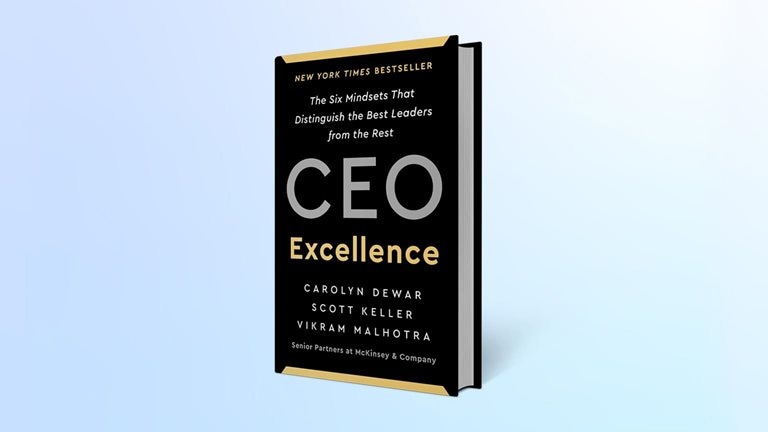
The CEO’s secret to successful leadership: CEO Excellence revisited

Staying ahead: How the best CEOs continually improve performance

Share these insights
Did you enjoy this newsletter? Forward it to colleagues and friends so they can subscribe too. Was this issue forwarded to you? Sign up for it and sample our 40+ other free email subscriptions here.
This email contains information about McKinsey's research, insights, services, or events. By opening our emails or clicking on links, you agree to our use of cookies and web tracking technology. For more information on how we use and protect your information, please review our privacy policy.
You received this email because you subscribed to our McKinsey Classics newsletter.
Copyright © 2024 | McKinsey & Company, 3 World Trade Center, 175 Greenwich Street, New York, NY 10007
by "McKinsey Classics" <publishing@email.mckinsey.com> - 01:35 - 20 Apr 2024 -
EP108: How do we design a secure system?
EP108: How do we design a secure system?
This weeks system design refresher: Top 12 Tips For API Security (Youtube video) How do we design a secure system? Things Every Developer Should Know: Concurrency is NOT parallelism Who are the Fantastic Four of System Design? SPONSOR US How to Start Your Engineering Metrics Program [Workshop] (Sponsored)͏ ͏ ͏ ͏ ͏ ͏ ͏ ͏ ͏ ͏ ͏ ͏ ͏ ͏ ͏ ͏ ͏ ͏ ͏ ͏ ͏ ͏ ͏ ͏ ͏ ͏ ͏ ͏ ͏ ͏ ͏ ͏ ͏ ͏ ͏ ͏ ͏ ͏ ͏ ͏ ͏ ͏ ͏ ͏ ͏ ͏ ͏ ͏ ͏ ͏ ͏ ͏ ͏ ͏ ͏ ͏ ͏ ͏ ͏ ͏ ͏ ͏ ͏ ͏ ͏ ͏ ͏ ͏ ͏ ͏ ͏ ͏ ͏ ͏ ͏ ͏ ͏ ͏ ͏ ͏ ͏ ͏ ͏ ͏ ͏ ͏ ͏ ͏ ͏ ͏ ͏ ͏ ͏ ͏ ͏ ͏ ͏ ͏ ͏ ͏ ͏ ͏ ͏ ͏ ͏ ͏ ͏ ͏ ͏ ͏ ͏ ͏ ͏ ͏ ͏ ͏ ͏ ͏ ͏ ͏ ͏ ͏ ͏ ͏ ͏ ͏ ͏ ͏ ͏ ͏ ͏ ͏ ͏ ͏ ͏ ͏ ͏ ͏ ͏ ͏ ͏ ͏ ͏ ͏ ͏ ͏ ͏ ͏ ͏ ͏ ͏ ͏ ͏ ͏ ͏ ͏ ͏ ͏ ͏ ͏ ͏ ͏ ͏ ͏ ͏ ͏ ͏ ͏ ͏ ͏ ͏ ͏ ͏ ͏ ͏ ͏ ͏ ͏ ͏ ͏ ͏ ͏ ͏ ͏ ͏ ͏ ͏ ͏ ͏ ͏ ͏ ͏ ͏ ͏ ͏ ͏ ͏ ͏ ͏ ͏ Forwarded this email? Subscribe here for moreThis weeks system design refresher:
Top 12 Tips For API Security (Youtube video)
How do we design a secure system?
Things Every Developer Should Know: Concurrency is NOT parallelism
Who are the Fantastic Four of System Design?
SPONSOR US
How to Start Your Engineering Metrics Program [Workshop] (Sponsored)
What’s the right metrics framework for your team? And how can you build a metrics program that not only measures, but improves engineering performance? LinearB is hosting a how-to workshop on May 2nd and 7th that will teach you how to shape your program to drive engineering efficiency. Successful implementation reduces cycle time by 47% on average, consistently improves developer experience measures, and increases delivery predictability.
This workshop includes:
A step-by-step framework for developing your program
Lessons from successful metrics + productivity initiatives
Take away materials and tools to help you get started
Top 12 Tips For API Security
How do we design a secure system?
Designing secure systems is important for a multitude of reasons, spanning from protecting sensitive information to ensuring the stability and reliability of the infrastructure. As developers, we should design and implement these security guidelines by default.
The diagram below is a pragmatic cheat sheet with the use cases and key design points.Authentication
Authorization
Encryption
Vulnerability
Audit & Compliance
Network Security
Terminal Security
Emergency Responses
Container Security
API Security
3rd-Party Vendor Management
Disaster Recovery
Latest articles
If you’re not a paid subscriber, here’s what you missed.
To receive all the full articles and support ByteByteGo, consider subscribing:
Things Every Developer Should Know: Concurrency is NOT parallelism
In system design, it is important to understand the difference between concurrency and parallelism.
As Rob Pyke(one of the creators of GoLang) stated:“ Concurrency is about dealing with lots of things at once. Parallelism is about doing lots of things at once." This distinction emphasizes that concurrency is more about the design of a program, while parallelism is about the execution.
Concurrency is about dealing with multiple things at once. It involves structuring a program to handle multiple tasks simultaneously, where the tasks can start, run, and complete in overlapping time periods, but not necessarily at the same instant.
Concurrency is about the composition of independently executing processes and describes a program's ability to manage multiple tasks by making progress on them without necessarily completing one before it starts another.
Parallelism, on the other hand, refers to the simultaneous execution of multiple computations. It is the technique of running two or more tasks or computations at the same time, utilizing multiple processors or cores within a computer to perform several operations concurrently. Parallelism requires hardware with multiple processing units, and its primary goal is to increase the throughput and computational speed of a system.
In practical terms, concurrency enables a program to remain responsive to input, perform background tasks, and handle multiple operations in a seemingly simultaneous manner, even on a single-core processor. It's particularly useful in I/O-bound and high-latency operations where programs need to wait for external events, such as file, network, or user interactions.
Parallelism, with its ability to perform multiple operations at the same time, is crucial in CPU-bound tasks where computational speed and throughput are the bottlenecks. Applications that require heavy mathematical computations, data analysis, image processing, and real-time processing can significantly benefit from parallel execution.Who are the Fantastic Four of System Design?
Scalability, Availability, Reliability, and Performance.
They are the most critical components to crafting successful software systems.Let’s look at each of them with implementation techniques:
Scalability
Scalability ensures that your application can handle more load without compromising performance.Availability
Availability makes sure that your application is always ready to serve the users and downtime is minimal.Reliability
Reliability is about building software that consistently delivers correct results.Performance
Performance is the ability of a system to carry out its tasks at an expected rate under peak load using available resources.
Over to you: What are the other pillars of system design and strategies you’ve come across?
SPONSOR US
Get your product in front of more than 500,000 tech professionals.
Our newsletter puts your products and services directly in front of an audience that matters - hundreds of thousands of engineering leaders and senior engineers - who have influence over significant tech decisions and big purchases.
Space Fills Up Fast - Reserve Today
Ad spots typically sell out about 4 weeks in advance. To ensure your ad reaches this influential audience, reserve your space now by emailing hi@bytebytego.com.
Like
Comment
Restack
© 2024 ByteByteGo
548 Market Street PMB 72296, San Francisco, CA 94104
Unsubscribe
by "ByteByteGo" <bytebytego@substack.com> - 11:36 - 20 Apr 2024 -
Ceci n’est pas une newsletter
The Shortlist
Four new insights Curated by Liz Hilton Segel, chief client officer and managing partner, global industry practices, & Homayoun Hatami, managing partner, global client capabilities
Technology is trending like never before, with gen AI cresting the wave. Decades of experience working with executives have taught us something vital: it’s never just about the tech. Companies need to pull other levers to get the most from their digital investments, like leadership, change management, talent, and innovation. In this edition of the CEO Shortlist, we explore how organizations are already deploying realistic AI simulations to achieve operational excellence, getting value from the cloud, and more. We hope you enjoy the read.
—Liz and Homayoun
Get real. Simulated realism, à la The Matrix, is here. Companies can—and do—create extremely accurate digital simulations of components, products, and processes that replicate the behavior of their real-world counterparts. But don’t take our word for it: read exactly how Formula One World Championship racing, John Deere, Tata Steel, and other organizations have taken their products to the next level with AI.
Get plugged in with “The AI revolution will be ‘virtualized,’” a new article by Kimberly Borden, Mark Huntington, Mithun Kamat, and Will Roper.Come for the machine learning insights, stay for the stories. Today, Pali Bhat is Reddit’s chief product officer. But he didn’t even see his first computer until he was in college. From there, he went on to use machine learning to improve payments on Google Chrome, develop high-quality Reddit data sets to train large language models, and embrace his mistakes.
Gather ’round for story time with “Pali Bhat on building intelligent products,” a McKinsey on Building Products podcast conversation with Chandra Gnanasambandam and Rikki Singh.Up in the air. Ninety-five percent of European companies in our recent survey say they’re capturing value from cloud computing. Two-thirds have at least 20 percent of their workload on the cloud. So what’s the problem? For all their success, these companies know they’re only scratching the surface. Plenty of North American and Asian peers are in the same predicament. Our latest research has answers on what comes next.
Check your download speed with “The state of cloud computing in Europe: Increasing adoption, low returns, huge potential,” by Bernardo Betley, Hana Dib, Bjørnar Jensen, and Bernhard Mühlreiter.Empathy and humanity. Those are the main themes we’re hearing as we talk to CEOs around the world about how they’re leading hundreds of thousands of colleagues through a seemingly endless series of global crises. In this update to our guidelines on what matters most for CEOs in 2024, we look at how things are going this year for those in the corner office.
Catch up on “CEO priorities: Where to focus as the year unfolds.”We hope you find these ideas inspiring and helpful. See you next time with four more McKinsey ideas for the CEO and others in the C-suite.
Share these insights
This email contains information about McKinsey’s research, insights, services, or events. By opening our emails or clicking on links, you agree to our use of cookies and web tracking technology. For more information on how we use and protect your information, please review our privacy policy.
You received this email because you subscribed to The CEO Shortlist newsletter.
Copyright © 2024 | McKinsey & Company, 3 World Trade Center, 175 Greenwich Street, New York, NY 10007
by "McKinsey CEO Shortlist" <publishing@email.mckinsey.com> - 04:38 - 19 Apr 2024 -
Want to know the economic upside of promoting Latinos in Hollywood?
On Point
Breaking barriers for Latinos in entertainment Brought to you by Liz Hilton Segel, chief client officer and managing partner, global industry practices, & Homayoun Hatami, managing partner, global client capabilities
•
Untapped potential of Latinos. Latinos could be the biggest per capita US consumers of media—and their culture and talent are popular among non-Latino US and global audiences, say senior partner Tomás Lajous and coauthors. Yet Latinos hold less than 5% of leading on-screen, off-screen, and executive roles in US media, according to McKinsey research. In an industry where who you know goes a long way, having fewer experienced Latinos to network with is a significant barrier.
—Edited by Querida Anderson, senior editor, New York
This email contains information about McKinsey's research, insights, services, or events. By opening our emails or clicking on links, you agree to our use of cookies and web tracking technology. For more information on how we use and protect your information, please review our privacy policy.
You received this newsletter because you subscribed to the Only McKinsey newsletter, formerly called On Point.
Copyright © 2024 | McKinsey & Company, 3 World Trade Center, 175 Greenwich Street, New York, NY 10007
by "Only McKinsey" <publishing@email.mckinsey.com> - 11:05 - 18 Apr 2024 -
Track and Manage Waste Collecting Fleets with Advanced Waste Management Software - SmartWaste.
Track and Manage Waste Collecting Fleets with Advanced Waste Management Software - SmartWaste.
Grow sustainable waste collection businesses with SmartWaste Software.SmartWaste simplifies the process of monitoring waste collection activities. Track the progress of the crew in real-time, ensuring that schedules are met and routes are optimized for maximum efficiency.
Benefits of having Waste Collection Software
Grow sustainable waste collection businesses with SmartWaste Software.

Uffizio Technologies Pvt. Ltd., 4th Floor, Metropolis, Opp. S.T Workshop, Valsad, Gujarat, 396001, India
by "Sunny Thakur" <sunny.thakur@uffizio.com> - 08:00 - 18 Apr 2024 -
A Crash Course in API Versioning Strategies
A Crash Course in API Versioning Strategies
Developing an API involves a lot of work, from planning to implementation. It's crucial to have a clear and easy-to-understand versioning strategy to avoid confusing developers. In this week's issue, we'll explore different versioning strategies for APIs.͏ ͏ ͏ ͏ ͏ ͏ ͏ ͏ ͏ ͏ ͏ ͏ ͏ ͏ ͏ ͏ ͏ ͏ ͏ ͏ ͏ ͏ ͏ ͏ ͏ ͏ ͏ ͏ ͏ ͏ ͏ ͏ ͏ ͏ ͏ ͏ ͏ ͏ ͏ ͏ ͏ ͏ ͏ ͏ ͏ ͏ ͏ ͏ ͏ ͏ ͏ ͏ ͏ ͏ ͏ ͏ ͏ ͏ ͏ ͏ ͏ ͏ ͏ ͏ ͏ ͏ ͏ ͏ ͏ ͏ ͏ ͏ ͏ ͏ ͏ ͏ ͏ ͏ ͏ ͏ ͏ ͏ ͏ ͏ ͏ ͏ ͏ ͏ ͏ ͏ ͏ ͏ ͏ ͏ ͏ ͏ ͏ ͏ ͏ ͏ ͏ ͏ ͏ ͏ ͏ ͏ ͏ ͏ ͏ ͏ ͏ ͏ ͏ ͏ ͏ ͏ ͏ ͏ ͏ ͏ ͏ ͏ ͏ ͏ ͏ ͏ ͏ ͏ ͏ ͏ ͏ ͏ ͏ ͏ ͏ ͏ ͏ ͏ ͏ ͏ ͏ ͏ ͏ ͏ ͏ ͏ ͏ ͏ ͏ ͏ ͏ ͏ ͏ ͏ ͏ ͏ ͏ ͏ ͏ ͏ ͏ ͏ ͏ ͏ ͏ ͏ ͏ ͏ ͏ ͏ ͏ ͏ ͏ ͏ ͏ ͏ ͏ ͏ ͏ ͏ ͏ ͏ ͏ ͏ ͏ ͏ ͏ ͏ ͏ ͏ ͏ ͏ ͏ ͏ ͏ ͏ ͏ ͏ ͏ ͏ Forwarded this email? Subscribe here for moreLatest articles
If you’re not a subscriber, here’s what you missed this month.
To receive all the full articles and support ByteByteGo, consider subscribing:
Developing an API involves a lot of work, from planning to implementation. It's crucial to have a clear and easy-to-understand versioning strategy to avoid confusing developers. In this week's issue, we'll explore different versioning strategies for APIs.
We'll begin by examining the reasons for versioning APIs and when it's necessary to release a new version. We'll also investigate various versioning strategies, how to label API versions, and methods for gracefully retiring outdated API versions.
So, without further ado, let’s jump right into it.
Why Version APIs?
As we add new features to our API, fix existing issues, or change how our API works, we need to deliver these changes without disrupting our users. Let’s understand this with an example.
Imagine we have an API for weather forecasts. Thousands of websites use it to build dashboards and other applications.
Let's say we want to change the data contract of our response object. This could involve renaming a field, adding a new one, or changing the entire data contract. If we change an existing field name, our users’ applications might stop working or start throwing errors.
To fix this, we'd have to ask all our users to update their applications to work with our newest changes. If this happens often, our users will be frustrated.
Versioning solves this problem. When we want to release a breaking change, we upgrade the version of our API. We release it in a way that lets users choose when to accept the changes.
Once clients start using our API, they rely on it to work as originally designed. If we make changes or release new versions without considering our clients' needs, it could cause problems. That's why it's important to version our API and give clients the choice to upgrade when they're ready.
That's why designing for change is essential for APIs. We should use versioning to deliver changes to our users in a clear, consistent, and well-documented manner.
When to Version APIs?...

Continue reading this post for free, courtesy of Alex Xu.
A subscription gets you:
An extra deep dive on Thursdays Full archive Many expense it with team's learning budget Like
Comment
Restack
© 2024 ByteByteGo
548 Market Street PMB 72296, San Francisco, CA 94104
Unsubscribe
by "ByteByteGo" <bytebytego@substack.com> - 11:35 - 18 Apr 2024 -
How well do you understand your own supply chain?
On Point
Addressing supply chain risk Brought to you by Liz Hilton Segel, chief client officer and managing partner, global industry practices, & Homayoun Hatami, managing partner, global client capabilities
•
Complex supply chains. Global trade has increased since the 1990s, improving millions of lives. Yet geopolitical concerns are also rising, and reducing imports from a country may not reduce geopolitical risk as much as expected. For instance, although the share of US imports of Chinese-made goods has declined, China’s share of value added in US final consumption has stayed steady, McKinsey Global Institute director Olivia White and coauthors reveal. This could result in a longer, more opaque, and not much more geopolitically diversified supply chain.
•
Understanding risk. For CFOs who function as the de facto chief risk officer in many organizations, it’s essential to dig deeper. A recent McKinsey survey revealed that only 2% of global supply chain leaders had visibility into their supply base beyond the second tier of suppliers. Find out three types of competitive edge that the best leaders sharpen in uncertain times, and read McKinsey Global Institute’s full report, Geopolitics and the geometry of global trade, to learn how global trade patterns are changing.
—Edited by Belinda Yu, editor, Atlanta
This email contains information about McKinsey's research, insights, services, or events. By opening our emails or clicking on links, you agree to our use of cookies and web tracking technology. For more information on how we use and protect your information, please review our privacy policy.
You received this newsletter because you subscribed to the Only McKinsey newsletter, formerly called On Point.
Copyright © 2024 | McKinsey & Company, 3 World Trade Center, 175 Greenwich Street, New York, NY 10007
by "Only McKinsey" <publishing@email.mckinsey.com> - 01:44 - 18 Apr 2024 -
What’s the future for cities in the postpandemic world?
Tune in New from McKinsey Global Institute

What’s the future for cities in the postpandemic world?
Tune in Prefer audio? Listen to the podcast, and explore past episodes of the Forward Thinking podcast. Subscribe via iTunes or Spotify.


Pandemic paradoxes, labor market myths, and ‘cowboy capitalism’ with David Autor
This email contains information about McKinsey's research, insights, services, or events. By opening our emails or clicking on links, you agree to our use of cookies and web tracking technology. For more information on how we use and protect your information, please review our privacy policy.
You received this email because you subscribed to our McKinsey Global Institute alert list.
Copyright © 2024 | McKinsey & Company, 3 World Trade Center, 175 Greenwich Street, New York, NY 10007
by "McKinsey Global Institute" <publishing@email.mckinsey.com> - 12:30 - 18 Apr 2024 -
More data would derisk investment in women’s health
Re:think
Closing the women’s health gap FRESH TAKES ON BIG IDEAS
ON WOMEN’S HEALTH
Improving women’s health could improve the world’s economyLucy Pérez
Being in good health means being unconstrained by physical, social, mental, or spiritual challenges that get in the way of being at your very best. Recent research from the McKinsey Health Institute indicates that men spend more time in good health than women do. This is what’s called the women’s health gap.
What’s behind this disparity? One reason is that women often aren’t treated in a way that reflects female biology. In the past, women’s health was equated with maternal and child health or, more broadly, sexual and reproductive health. That was based on the mistaken assumption that women were just smaller men, differentiated only by their reproductive organs.
It is now understood that female biology is different from male biology—beyond the reproductive system. This realization has led to more awareness of how some diseases manifest differently in women than in men and how addressing those differences can result in better health and economic outcomes.
Heart attacks, for example, tend to manifest in men as pressure on the left side of the chest and a weak or numb left arm. In women, they could also present as nausea, dizziness, or a feeling that something is off but you can’t quite pinpoint what. When a woman shows up to the ER with these symptoms, the doctor there may not have been trained to recognize that heart attacks may manifest differently in women. As a result, women are often sent home with medicine for their nausea, instead of being treated for a heart attack.
Data on why conditions manifest differently in men and women is lacking, which contributes to the health gap in multiple ways. For one, less data leads to less investment. When you’re spending upward of $1 billion to develop a drug, you want the best understanding of everything, including biological mechanisms, physiology, and genetics. The uterus is one of the least understood organs in the human body, even though almost half of the world’s population has one. A more limited understanding of how this organ works means it is riskier to develop drugs for conditions that affect it. So it’s not too surprising that uterine cancer is one of the top conditions contributing to the women’s health gap in the United States.“Our research shows that closing the women’s health gap could boost the global economy by $1 trillion annually by 2040.”
Many often assume that the women’s health gap primarily manifests later in life and is connected to women’s living longer on average. But we’ve found that the majority of the gap shows up during women’s prime working years. Not addressing it has huge economic implications, because if women were healthier, they could be more productive.
Our research shows that closing the women’s health gap could boost the global economy by $1 trillion annually by 2040. For the average woman, this would mean seven more days of living in good health each year and more time to be in the workforce. Closing the gap would also contribute to a stronger society, because healthier people are able to spend more time engaging with the world around them.
Employers in all industries should embrace policies that advance health equity. Support in the workplace for women experiencing menopause, for instance—a condition that almost every woman will go through but one that is poorly understood and whose diagnosis is often delayed—can go a long way toward retaining those who may otherwise exit the workforce prematurely.
The medical-research and academic communities also have a significant role to play. More investment is needed to collect data that enables us to understand sex-based differences and find solutions. Medical schools should evolve away from the prevalent model today, whereby women’s health is only covered as part of the OB-GYN rotation, so that medical professionals can understand and provide sex-appropriate care.
A couple of things inspire optimism. I am gratified to see more headlines about conditions that affect women differently or disproportionately. Women don’t have to lower their voices anymore to talk about menstrual health and menopause. More private-equity-backed companies are developing products focused on women’s health. The number of entrepreneurs focused on women’s health continues to rise. Regulators are increasingly demanding a better understanding of sex-based differences, and more providers are being trained on how to address sex-based differences. The world has made a lot of progress on this topic, but it still has a long way to go.ABOUT THIS AUTHOR
Lucy Pérez is a senior partner in McKinsey’s Boston office and an affiliated leader of the McKinsey Health Institute.
MORE FROM THIS AUTHOR
UP NEXT
Chandra Gnanasambandam on software productivity
Companies have long had a hard time gauging what contributes to the productivity of developer teams. But a new approach could help to tackle this challenge and fuel innovation in the process.
This email contains information about McKinsey’s research, insights, services, or events. By opening our emails or clicking on links, you agree to our use of cookies and web tracking technology. For more information on how we use and protect your information, please review our privacy policy.
You received this email because you subscribed to our McKinsey Quarterly alert list.
Copyright © 2024 | McKinsey & Company, 3 World Trade Center, 175 Greenwich Street, New York, NY 10007
by "McKinsey Quarterly" <publishing@email.mckinsey.com> - 01:07 - 17 Apr 2024



